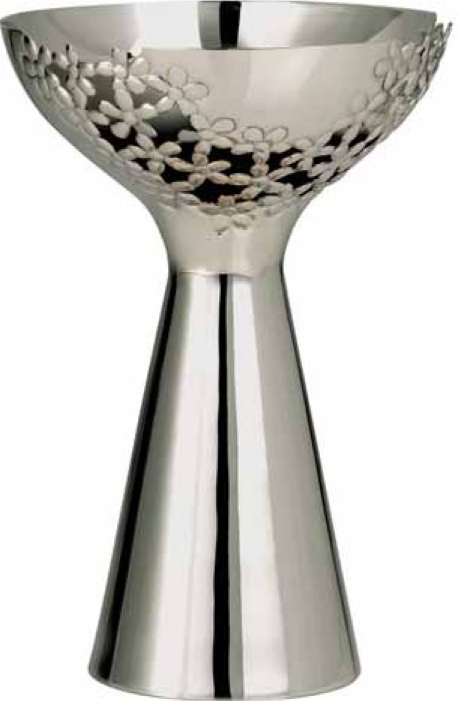As a very soft metal, silver is only used in its pure form for plating. To make it more durable for making jewellery and cutlery it is alloyed with copper to produce sterling silver (92.5 per cent silver and 7.5 per cent copper), which adds hardness. It is easy to think of silver as a material used mainly for jewellery, but it does in fact have some surprisingly unique and outstanding properties, which are exploited in a range of less familiar industries. For example, historically, silver was used to detect poison in food, with silver cutlery used to indicate if poison was present because the silver would turn black if it reacted with arsenic.
But it’s not just the fact that it tarnishes and its reactions to chemicals that make silver useful, it is also the most efficient conductor of electricity and has a high reflectivity of light, which means it is often partnered with glass for mirrors: mirrors, windows for reflecting heat and light, and light-reactive prescription sunglasses all utilize this feature of silver. This unique ability to react to light also accounts for what used to be one of its main market areas: traditional photography. Silver has a unique ability to react to light, forming latent images that can be developed later to produce photographs. However, with the decline of traditional photography one of the growth areas for silver is in antimicrobial applications, where it is used to control odour in a range of wearable applications, it is also used to regulate body heat.
Caption: Silvered brass centrepiece, Chitai Mann Singh

•Outstanding electrical conductivity
•Capable of good surface finish
•Outstanding thermal conductivity
•Easily tarnishes
•High sensitivity to light
•High sensitivity to discolouration
•Very malleable and ductile
•Corrosion resistant
•Antibacterial
•Recyclable
Sources
Mexico and China are two of the biggest producers of silver, accounting for around one third of global production. World reserves are estimated to be in the region of 530,000 tonnes.
Cost
£620 ($970) per kg.
Sustainability issues
Silver is not known to be harmful to the body in any way, and its ability to inhibit bacterial growth can be seen as a benefit. Silver is the main active ingredient in photovoltaic cells and therefore contributes to non-petroleum based fuel. It is also used in glazing, where silver coatings reduce the amount of UV light that penetrates the glass.
Production
The ductility of silver is one of the reasons it has such widespread use in jewellery; it can be easily formed by cold working, annealing, extrusion and also various casting methods, such as lost-wax casting.
Typical applications
Silver is mainly used in the jewellery, industrial and photographic industries. It has the highest conductivity of any metal, so is used in the electronics industry to produce solders. Its ability to react to light is exploited in producing photographs, and a large proportion of the total use of silver in the USA is in this area. It is widely used as a plating material, and also provides excellent electromagnetic field (EMF) shielding.
Derivatives
–Sterling silver (silver, copper)
–Electrum (silver, gold)
–Amalgam (silver, mercury)
–Britannia silver (silver, copper)
–Argentium sterling silver (silver, copper, germanium)
–Billon (copper or copper bronze, sometimes with silver)
–Goloid (silver, copper, gold)
–Platinum sterling (silver, platinum)
–Shibuichi (silver, copper)
| + | – |
|
–Excellent electrical and thermal conductivity –Light sensitive –Malleable and ductile –Highly decorative –Antibacterial –Recyclable |
–Sensitive to discolouration –Easily tarnishes |
